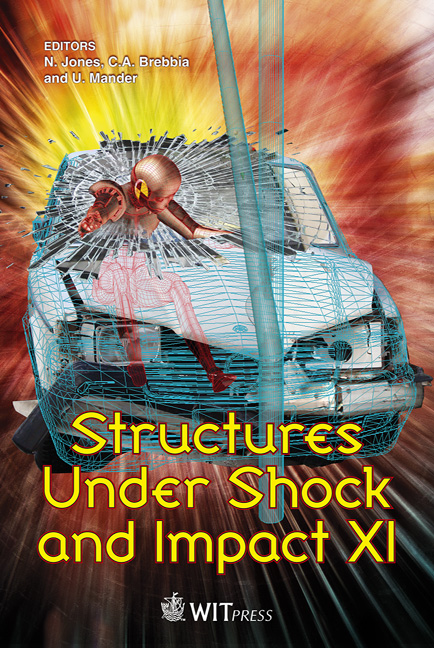Modelling The Response Of UHPFRC Panels To Explosive Loading
Price
Free (open access)
Transaction
Volume
113
Pages
12
Page Range
173 - 184
Published
2010
Size
936 kb
Paper DOI
10.2495/SU100151
Copyright
WIT Press
Author(s)
G. K. Schleyer, S. J. Barnett, S. G. Millard & G. Wight
Abstract
Explosive testing of full-size fibre-reinforced concrete panels was conducted at GL Industrial Services at Spadeadam test site, Cumbria, England in 2008. The panels were manufactured by VSL Australia and shipped to Spadeadam for testing. This paper reports these tests and a simplified analysis of the response of the panels. Each panel measured 3.5m by 1.3m by 100mm thick. The panels were contained within a large concrete enclosure to minimise clearing around the sides from the blast wave and placed between 7m and 12m from a 100 kg TNT equivalent explosive charge. Two of the panels were fabricated with different levels of steel fibre dosage. The remaining two panels were fabricated with steel fibres together with supplementary steel bar reinforcement. Numerical computer modelling was carried out using the Autodyn package to predict the behaviour of the four panels before testing. Based on the predictive modelling, each panel was placed a suitable distance from the explosive charge so as to cause permanent damage but not total structural collapse. The maximum flexural tensile strain rate evaluated on the back face of the panel was in the region of 1.0s-1. Simplified modelling of the panels was also carried out using a singledegree- of-freedom representation together with a resistance-deflection relationship that took account of characteristic brittle cracking and ductile softening behaviour following ultimate capacity. An outline of the method with results is given in the paper. Keywords: fibre-reinforced concrete, explosive testing, SDOF modelling, ductile softening behaviour.
Keywords
fibre-reinforced concrete, explosive testing, SDOF modelling, ductile softening behaviour





